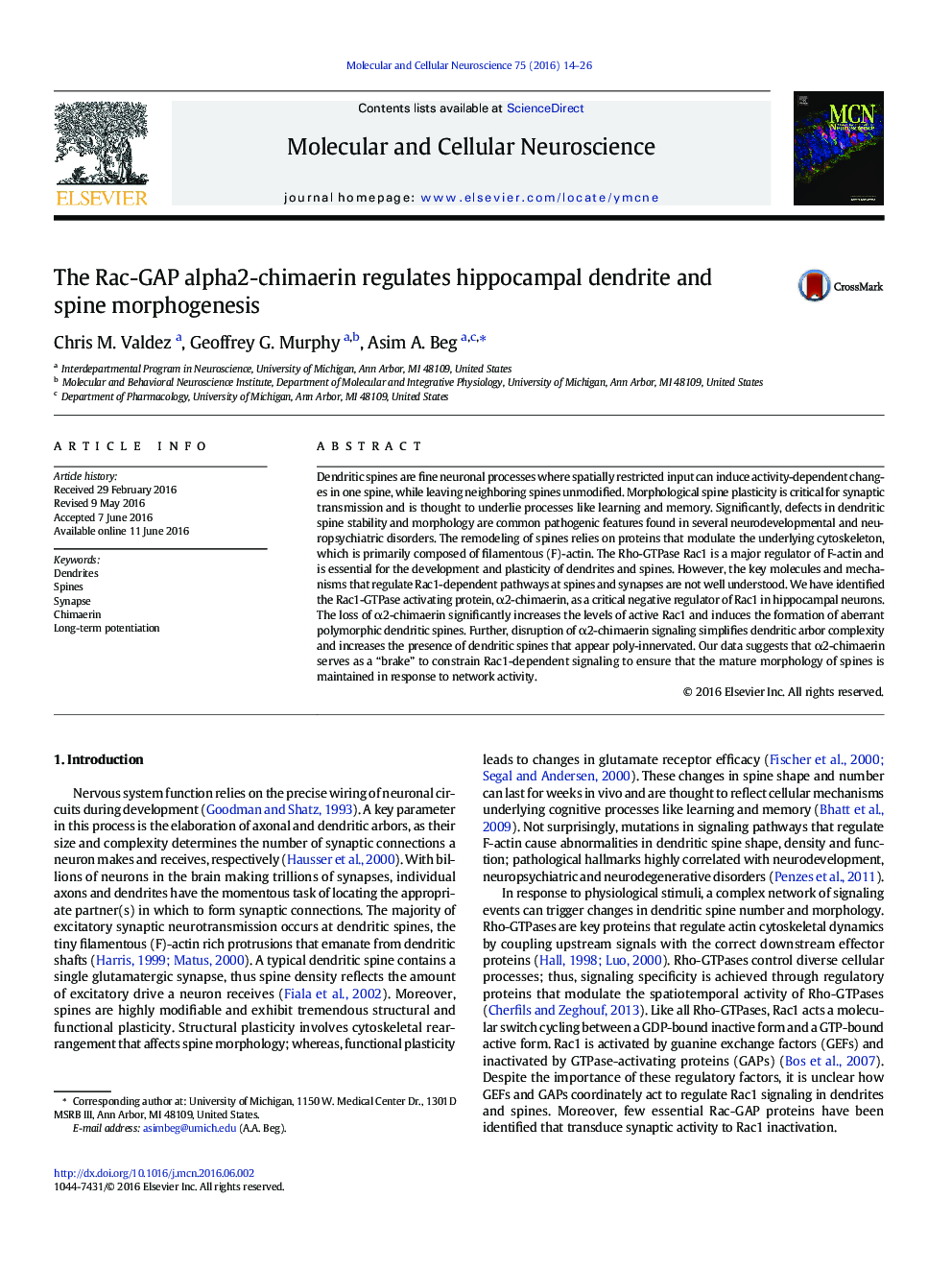| Article ID | Journal | Published Year | Pages | File Type |
|---|---|---|---|---|
| 8478456 | Molecular and Cellular Neuroscience | 2016 | 13 Pages |
Abstract
Dendritic spines are fine neuronal processes where spatially restricted input can induce activity-dependent changes in one spine, while leaving neighboring spines unmodified. Morphological spine plasticity is critical for synaptic transmission and is thought to underlie processes like learning and memory. Significantly, defects in dendritic spine stability and morphology are common pathogenic features found in several neurodevelopmental and neuropsychiatric disorders. The remodeling of spines relies on proteins that modulate the underlying cytoskeleton, which is primarily composed of filamentous (F)-actin. The Rho-GTPase Rac1 is a major regulator of F-actin and is essential for the development and plasticity of dendrites and spines. However, the key molecules and mechanisms that regulate Rac1-dependent pathways at spines and synapses are not well understood. We have identified the Rac1-GTPase activating protein, α2-chimaerin, as a critical negative regulator of Rac1 in hippocampal neurons. The loss of α2-chimaerin significantly increases the levels of active Rac1 and induces the formation of aberrant polymorphic dendritic spines. Further, disruption of α2-chimaerin signaling simplifies dendritic arbor complexity and increases the presence of dendritic spines that appear poly-innervated. Our data suggests that α2-chimaerin serves as a “brake” to constrain Rac1-dependent signaling to ensure that the mature morphology of spines is maintained in response to network activity.
Related Topics
Life Sciences
Biochemistry, Genetics and Molecular Biology
Cell Biology
Authors
Chris M. Valdez, Geoffrey G. Murphy, Asim A. Beg,
